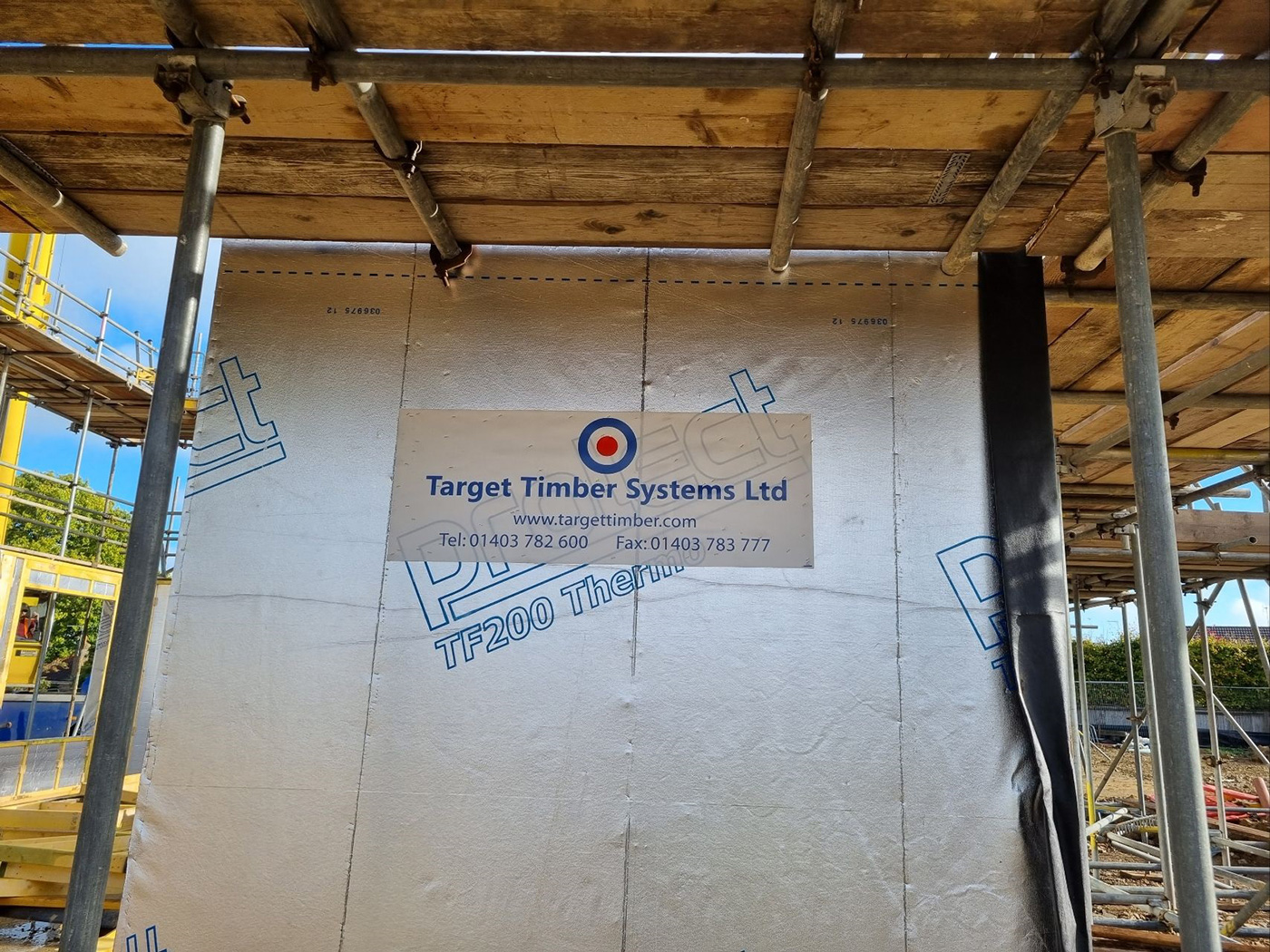Any good property developer or house builder today will be fully aware of the latest and most efficient and cost-effective methods of construction – the primary one being off-site manufacturing of timber frame systems.
Pre-fabricated timber frame systems offer many benefits, not least quicker build times, lower costs, less labour, and less waste. However, one of the biggest advantages of timber frame systems comes from closed panel timber frames that deliver natural high thermal efficiency which results in long-term energy savings.
As a leading supplier of closed panel timber frames, we’ve outlined below some of the key advantages that these systems offer property developers and owners.
Pre-manufacturing ensures BSE standards are always met
A closed panel timber frame is a pre-manufactured insulated wall panel that can be delivered directly to the site and installed immediately, ready for the first fix and outer brickwork.
Every closed panel system that we make is produced in a controlled environment to ensure that high standards of thermal insulation and airtightness are achieved before they leave our factory. Each panel comprises the outer frame, insulation, vapour control and services cavity.
A key feature of our closed panel timber frames is that they achieve much lower U-values than conventional block and brick building methods. Each panel must comply with BSE quality standards and will be quality-checked before they leave our factory.
Closed panel timber frames achieve the best U-values
A U-value, otherwise known as thermal transmittance, is a measurement of how easily heat can go through materials, which needs to be as small as possible to prevent energy loss in a building. While calculating U-values can be complex to work out, what matters is the actual U-value achieved during testing.
U-values are calculated by measuring the heat transfer rate divided by the difference in temperature across the material(s). The value is shown as W/m²K, and the lower the U-value the better the insulation.
To achieve Part L building regulations compliance, U-values must achieve 0.26 W/m²K or less. This rate is fairly typical for block and brick construction however, Target Timber’s closed panel timber frames achieve some of the lowest U-Values possible, down to 0.1718 W/m²K, including the outer brickwork.
Closed panel timber frame materials are sustainable and traceable
Sustainability sits at the heart of the timber frame industry and as a building material, timber remains the most environmentally friendly. But we are never complacent – we have rigorous processes in place to ensure that our timber supplies remain sustainable.
Timber is a carbon-neutral, renewable material that naturally sequesters carbon. 99% of all of the timber that we use for our timber frame systems and closed and open panels use European softwood which comes from forests that grow by 3,500 miles every year. And our timber also has the double assurance of being FSC and FSFC certified.
Our closed panels are insulated with PIR (polyisocyanurate), a high thermal insulator that is manufactured with zero ozone-depleting blowing agents and is CFC-free meaning no greenhouse gas emissions are produced from these products.
Closed panel timber frames meet all current fire regulations
There are many misconceptions about the fire safety of timber frames in construction and you’ll find countless views. The facts are that timber frame systems are stringently tested and our timber frame systems are approved by the Structural Timber Association.
The STA testing ensures that above all else, there is time for people to escape from a burning building – 30 mins for a house, 60 mins for flats.
There are countless more advantages to building with Target’s timber frame systems, but the greatest advantage of all is that off-site manufacturing will always ensure that any design specification is met, all regulations are adhered to and that buildings will deliver long-term energy efficiency.


